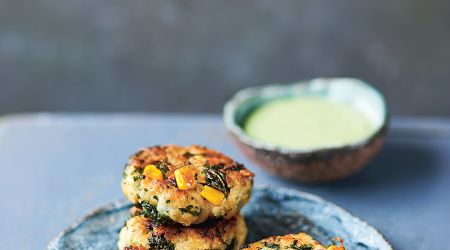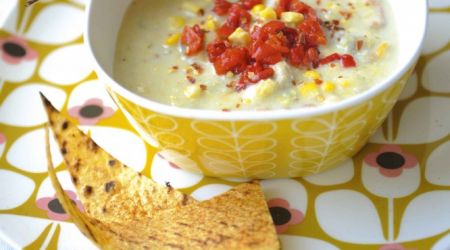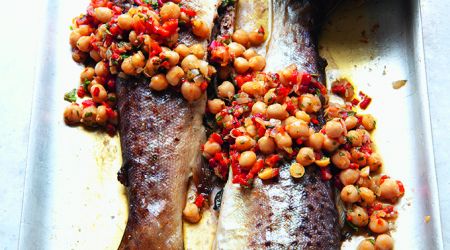Sweetcorn
Exploding with sweet flavour, the fleshy golden kernels are at their best just-picked. Eat simply with melted butter or add to nearly any dish, says Clarissa Hyman.
The word ‘corn’ has confused many over the centuries. Zea mays has been the staple grain of Central America and Mexico for at least 3,000 years, and was the only cereal of the Aztec, Maya and Inca civilisations. Laden with myth and mystery, the plants were a central part of those cultures, the kernels ground for bread or gnawed fresh off the cob.
Once introduced to Europe, the plant was dubbed ‘corn’ in English, a generic term used for any cereal grain such as wheat. At first the British, French and Dutch called it ‘Turkish’ corn, the Turks named it ‘Egyptian’ corn, and the Egyptians contrarily termed it ‘Syrian’ corn. In the Americas, the labelling was more specific and from the 17th century the plants were called ‘maize’ or ‘Indian corn’.
Wild maize no longer exists but although there is only one species of cultivated maize, there are innumerable varieties, sub- varieties and sub-sub-varieties of all sizes and colours, from yellow and white to red, blue, brown and variegated. Field corn is grown for animal fodder: the famous French chickens of the Landes and Bresse areas, for example, owe their excellent yellow flesh to a diet of local maize. Particularly in the US, corn is used to make corn oil, corn syrup, corn starch and ethanol among other products.
Corn flour, for example, is made by soaking maize in water with a small amount of sulphuric acid to prevent fermentation and to soften the maize kernels. It is almost pure starch and in this respect differs from corn meal (polenta) and Mexican masa de maíz used to make tortillas. It contains no gluten so can make a better thickener than flour. Popcorn is a particular kind of maize that makes the fluffy white snack when heated until the kernel bursts (with a pop). It’s nothing new – it was known to the Incas.
Of all the by-products linked with corn, cornflakes are perhaps the most ubiquitous, dating from the late 19th century and still the favourite cereal in millions of homes.
Genetically modified maize has been engineered to resist pests and herbicides, and is now grown in many countries, despite the controversies that persist regarding its possible health and environmental impact.
Sweetcorn, also known as corn on the cob, is the kind we all see at the greengrocer’s. When buying sweetcorn, look for creamy-coloured, tightly packed, juicy kernels on a plump, well-rounded cob. The husk should be soft and pale green (a sign of being gastronomically ripe), and the tassel brown and silky. Baby sweetcorn is harvested when immature and is now a common ingredient in Eastern stir-fries.
For many, though, corn is the still the quintessential taste of America, not just on the cob but also in soups and chowders, relishes and pickles, puddings, fritters and bread. As with peas, most frozen corn is processed soon enough after harvest to keep the sugar content intact. Even tinned corn is a good substitute for fresh, although the taste and texture will never be as good.
Corn needs only the briefest of cooking in fast-boiling water- 30 seconds at best, a couple of minutes at most. This is because the longer corn is cooked, the tougher it becomes. And don’t add salt to the water, as this also toughens the kernels. Corn can actually be cooked with most of the husk on and only the tough outer leaves removed. This improves the flavour and also keeps the ears warm for longer once removed from the water.
Cobs can be steamed or roasted, and the latter (with the husk off) will deliciously caramelise the kernels. Barbecued sweetcorn is also a singular pleasure: grilled in the husks, the kernels will be moist, tender and aromatic. A Mexican touch is to sprinkle them with lime juice, sea salt and fresh coriander.
When the corn is soaring towards the sky, and you are lucky enough to get a just-picked cob, then it brings out the best in these miraculous golden grains. Forget the corn holders, they went out with doilies and avocado dishes. Eating whole sweetcorn means getting your hands and face deliciously messy.
To quote writer Garrison Keillor: ‘Sex is good, but not as good as fresh, sweet corn.’ Sweetcorn and sex indeed seem destined to go together. Corn plants contain both genders: male tassel and female flower that propagate to produce mature ears.
It is a heavy-yielding crop but it lacks the gluten needed for leavened bread and is also lacking in niacin. The latter problem was solved in Central America by the process of nixtamalization (treating with an alkali solution) but the process was never adopted on other continents; as a result, communities in northern Italy and Ireland historically suffered badly from pellagra – a vitamin deficiency condition caused by lack of niacin when they became over- reliant on their crop.
Another problem is that the sugar in the kernel starts to turn into starch as soon as the ears are picked. This results in a noticeable loss of flavour – hence the need for tip-top freshness. The conversion rate of sugar to starch is relatively slower in the new super-sweet supermarket hybrids; although this gives them a longer shelf life, the down side is their excessive sweetness. Nor are they suitable for every dish: by comparison, the ‘normal’ types such as Jubilee have a good old-fashioned corn flavour and creamy texture, while still being very sweet.
Navajo medicine men would sprinkle maize flour on the walls of the Sacred House of Santa Fé and chant the following: ‘Joy and beauty, may the sweet yellow maize accompany you to the ends of the earth.’ And, for a vegetable, that must be as good as it gets.

.jpg)
Recipes
Get Premium access to all the latest content online
Subscribe and view full print editions online... Subscribe

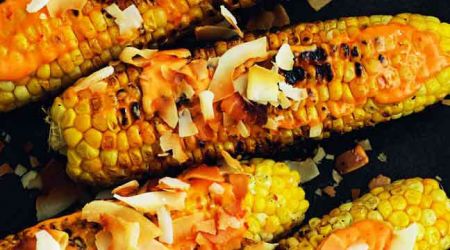

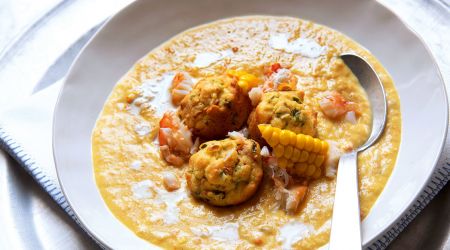
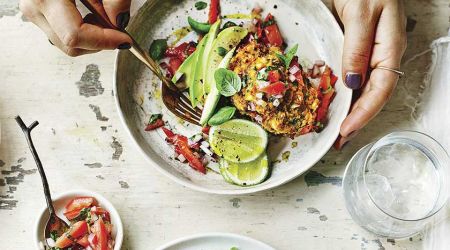
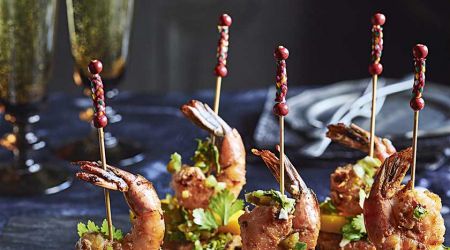
_bc3f3685bee9310b32ee8e27b331ee38.jpg)
_bc3f3685bee9310b32ee8e27b331ee38.jpg)
_1_bc3f3685bee9310b32ee8e27b331ee38.jpg)
